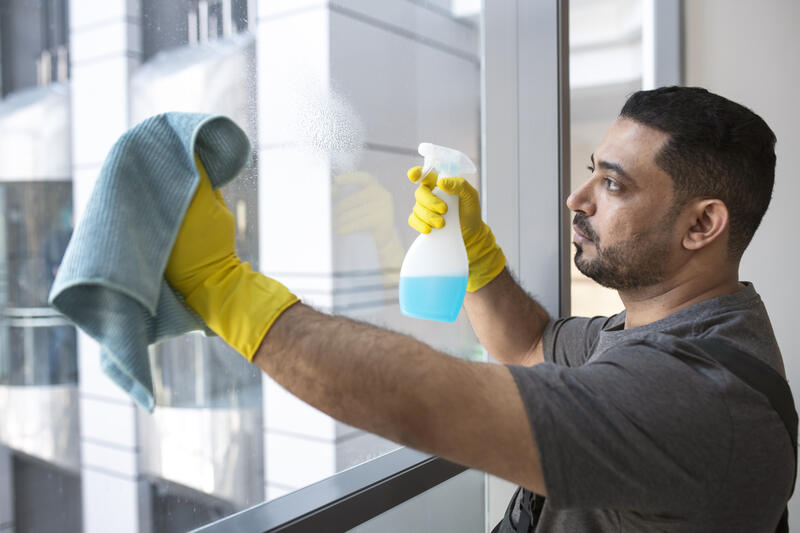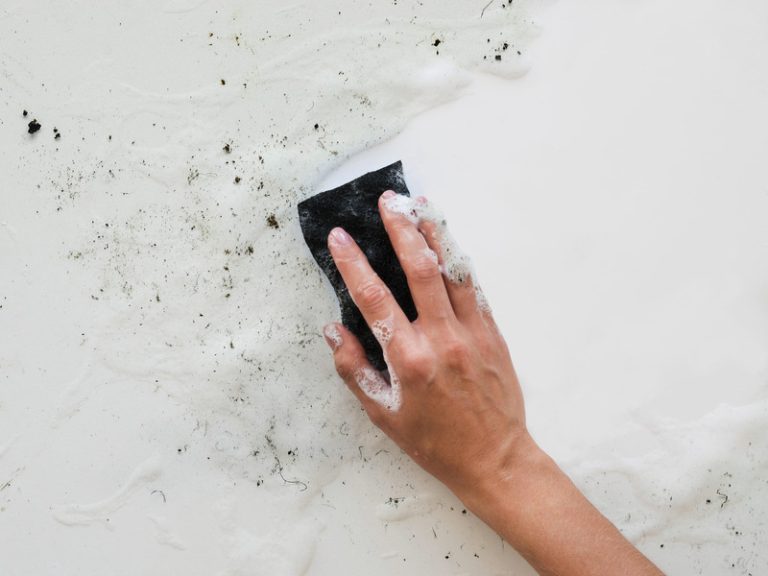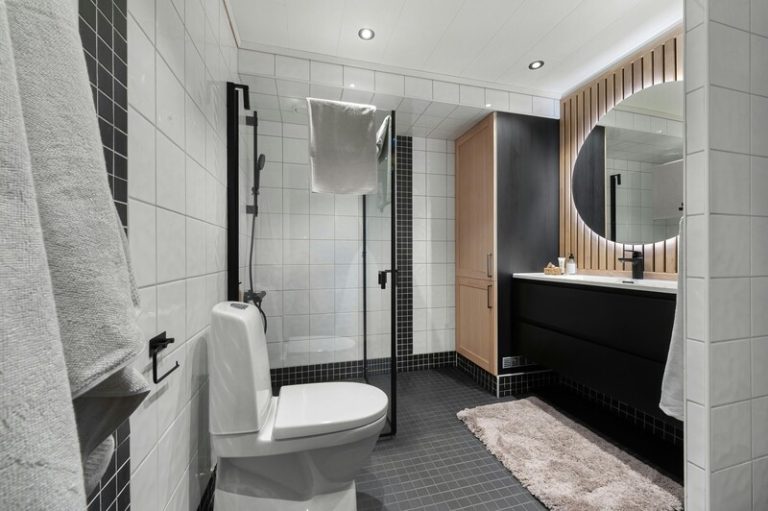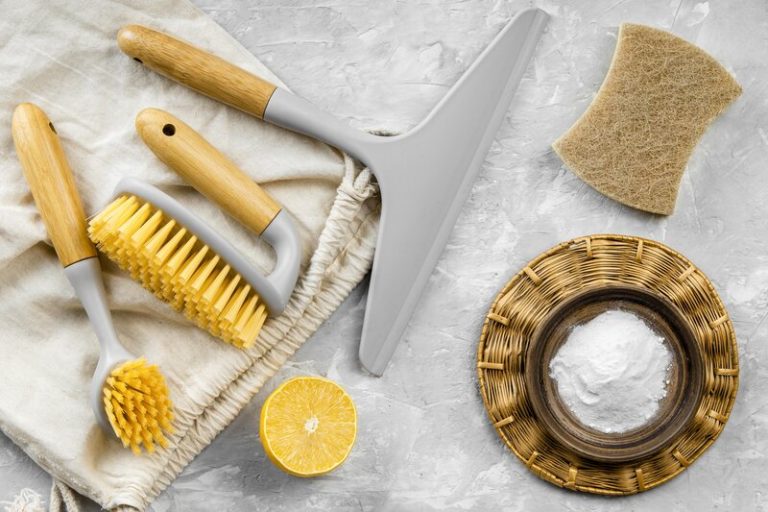Want to know what is commercial window cleaning and why it is important? Find out more in this commercial window cleaning guide.
In this article, we explore the different types of commercial window cleaning, the equipment needed, and the step-by-step process for proper cleaning.
We also discuss important safety precautions to follow when performing commercial glass cleaning.
Whether you are a business owner or a professional window cleaner, this article will provide you with valuable insights to ensure the job is done effectively and safely.
The Importance of Commercial Window Cleaning
Commercial window cleaning refers to professional cleaning services aimed at maintaining the cleanliness and appearance of windows in commercial buildings, offices, and businesses. It involves specialised techniques and equipment to ensure a streak-free and spotless finish.
Commercial cleaning windows is crucial for creating a positive first impression on clients and visitors. Clean windows enhance the aesthetics of a commercial property, contribute to a healthier indoor environment, and improve natural light penetration.
Maintaining spotless windows demonstrates a commitment to attention to detail and professionalism. The sparkling windows reflect a sense of pride in the business surroundings, showcasing a high level of care and maintenance.
Regular window cleaning also plays a pivotal role in ensuring workplace safety by identifying potential hazards like cracks or damages that could compromise the integrity of the windows. This proactive approach minimises risks and liability issues associated with neglected window maintenance.
Different Types Of Commercial Window Cleaning
One thing that should not be overlooked in the explanation of the commercial window cleaning guide is the various methods used. To date, there are many techniques used in commercial window cleaning, including:
a. Traditional Window Cleaning
Traditional window cleaning involves manual cleaning using squeegees, scrubbers, and cleaning solutions to achieve a sparkling finish. It is a time-tested method that ensures precision in cleaning the windows of commercial buildings.
In the hands of skilled professionals, squeegees play a crucial role in removing dirt and grime efficiently without leaving streaks behind. The process typically begins by wetting the window with a cleaning solution to loosen the dirt. Then, the squeegee is used to glide smoothly down the surface, effectively removing the liquid and dirt in one clean sweep. This technique not only saves time but also ensures a streak-free finish.
b. Water Fed Pole Window Cleaning
Water-fed pole window cleaning utilises extendable poles with purified water systems to clean windows from the ground level without the need for ladders or lifts. This method is efficient for exterior glass surfaces of tall buildings.
Using water-fed poles in window cleaning allows operators to manoeuvre the poles with precision, reaching heights that would otherwise be inaccessible. The purified water used in this process eliminates the need for chemicals, leaving windows streak-free and crystal clear.
Water-fed pole cleaning also offers a safer working environment, reducing the risk of accidents associated with traditional window cleaning methods involving ladders. It is a cost-effective solution for maintaining the cleanliness and appearance of high-rise buildings without compromising on quality.
c. High Rise Window Cleaning
High-rise window cleaning involves specialised techniques and equipment to clean windows in tall buildings safely. It often utilises Building Maintenance Units (BMU) or specialised lifts for access.
One of the main challenges faced by high-rise window cleaners is working at substantial heights, which comes with significant safety considerations. The professionals in this field must undergo rigorous training to ensure they can handle the unique risks associated with high-altitude cleaning.
Weather conditions such as strong winds can pose serious hazards during window cleaning operations at great heights. The use of advanced technology, such as custom-designed rigs and platforms, is essential to guarantee the safety of workers and the efficient completion of tasks.
The maintenance and regular inspection of equipment like harnesses, ropes, and anchors are crucial to prevent accidents and ensure a secure working environment.
d. Rope Access Window Cleaning
Rope access window cleaning is a method where technicians abseil from the roof of a building using ropes and harnesses to reach and clean windows in challenging or inaccessible areas. Safety measures are paramount in this technique.
Proper safety protocols are crucial during rope access window cleaning to protect the technicians and ensure a successful operation. Before commencing any work, technicians undergo thorough training to learn the correct techniques for using harnesses and ropes. These essential tools help them safely manoeuvre the facade of the building and access windows in hard-to-reach locations.
What Equipment Is Needed For Commercial Window Cleaning?
Commercial window cleaning requires specialised equipment such as squeegees, scrubbers, ladders, platforms and water-fed poles to effectively clean windows of different heights and surfaces. Here’s a full explanation:
a. Squeegees
Squeegees are handheld tools with rubber blades used in commercial window cleaning to remove water and cleaning solutions from glass surfaces. They provide a streak-free finish and are essential for achieving crystal-clear windows.
There are several types of squeegees available on the market, including the traditional single-blade squeegees, the popular dual-blade squeegees, and the innovative magnetic squeegees designed for hard-to-reach areas. Each type caters to specific cleaning needs and preferences, offering unique benefits in terms of efficiency and usability.
Squeegees are commonly made from high-quality materials such as stainless steel, brass, or durable plastics, ensuring longevity and effectiveness during cleaning tasks. Proper maintenance of squeegees is vital to prolong their lifespan and optimise performance. This includes regular cleaning of the rubber blades, lubricating the moving parts, and storing them properly after each use.
b. Scrubbers
Scrubbers are tools equipped with bristles or pads that help in loosening dirt and grime from window surfaces during commercial cleaning. They facilitate the initial cleaning process before squeegeeing.
There are different types of scrubbers available, including handheld scrubbers, extension pole scrubbers, and rotating scrubbers. Each type serves its unique purpose in addressing various window cleaning needs. These scrubbers are highly effective in removing stubborn stains, dried-on dirt, and residue from windows, providing a thorough and streak-free clean.
Proper usage of scrubbers involves using gentle pressure and back-and-forth motions to ensure thorough cleaning without damaging the glass surface. Regular maintenance of scrubbing tools is essential to prolong their lifespan. This includes cleaning the bristles regularly, replacing worn-out pads, and storing them properly after use to prevent damage.
c. Ladders and Platforms
Ladders and platforms are essential for accessing windows at different heights during commercial window cleaning. They provide stable support for window cleaners to reach and clean elevated surfaces.
When utilising ladders, it is crucial to adhere to safety protocols such as ensuring proper placement on stable ground and securing them correctly. Regular maintenance of ladders is imperative to prevent accidents due to wear and tear.
Platforms offer an alternative to ladders, providing a larger working area and often increased safety measures with guardrails and non-slip surfaces. Companies must prioritise the training of their staff on the correct setup and use of platforms to minimise risks of falls or injuries.
d. Water Fed Poles
Water-fed poles are extendable cleaning tools with integrated water supply systems used for exterior window cleaning in commercial buildings. They eliminate the need for manual scrubbing and provide efficient cleaning solutions.
One of the key functions of water-fed poles is that they utilise purified water systems, ensuring a streak-free finish without the need for chemical cleaners, making them environmentally friendly and safe for use. Their telescopic designs allow cleaners to reach high or awkward windows easily, reducing the risks associated with working at heights. The lightweight construction of these poles further enhances their usability, minimising user fatigue during extended cleaning tasks.
Commercial Window Cleaning Guide
Proper commercial window cleaning involves a systematic approach that includes preparing the area, removing debris, cleaning the glass surfaces, and applying finishing touches for a polished look. The following is a complete explanation of a commercial window cleaning guide:
a. Preparing the Area
Preparing the area for commercial window cleaning involves clearing the workspace, securing access points, and ensuring the safety of both the cleaners and the building occupants. It sets the foundation for a smooth cleaning process.
- Clearing the workspace includes removing any obstacles that could hinder access to the windows, such as furniture or decorations.
- Securing access points involves making sure that doors and windows are locked to prevent unauthorised entry while work is being done.
- Implementing proper safety measures, such as using caution signs and safety cones, helps alert both the cleaners and passers-by to the ongoing cleaning activities.
- Organising cleaning tools and equipment in a designated area can streamline the process and make it more efficient.
- Setting up a workspace free of clutter minimises the risk of accidents and ensures that the cleaners have easy access to all areas that need attention.
b. Removing Debris and Dirt
Removing rubble and dust from window surfaces is a critical step in commercial window cleaning to ensure a clear and unobstructed view. This process involves dusting, vacuuming, or gentle washing to prepare the glass for cleaning.
By effectively removing debris and dirt, not only does it improve the overall appearance of the windows but also enhances natural light infiltration. Dusting is a quick and efficient method to get rid of loose particles while vacuuming helps tackle harder-to-reach areas along the window frame. When gentle washing is required, using a mild detergent solution with a soft cloth can effectively lift and dissolve stubborn grime.
Thorough surface preparation is crucial as it ensures that the cleaning solution adheres properly to the glass, allowing for streak-free and crystal-clear results. Neglecting this preparatory step may lead to unsightly streaks and smudges, diminishing the overall cleanliness of the windows.
c. Cleaning the Glass
Cleaning the glass surfaces of commercial windows involves the use of appropriate cleaning solutions, tools, and techniques to remove dirt, grime, and streaks. It requires attention to detail and precision for a flawless finish.
One crucial step in the process is the careful selection of cleaning solutions that are effective yet safe for the glass and surrounding environment. Professionals often opt for specialised cleaners that cut through tough stains without leaving residue.
The strategic use of squeegees and scrubbers plays a significant role in achieving crystal-clear windows. The squeegee helps to remove excess water and cleaning solution, while the scrubber loosens stubborn grime for easier removal.
A technique-oriented approach is essential for avoiding streaks and ensuring a uniform shine on the glass. With practised movements and attention to detail, cleaning professionals can deliver spotless windows that enhance the aesthetic appeal of any building.
d. Drying and Finishing Touches
Drying and applying finishing touches to commercial windows involve removing excess water, buffing the glass surfaces, and ensuring a streak-free shine. It adds a final polish to the cleaning process.
Proper drying techniques are crucial to achieve a pristine finish on commercial windows. To prevent water spots, use a squeegee to remove excess moisture efficiently. For a streak-free shine, consider using a microfibre cloth or newspaper for final buffing. These materials help to absorb any remaining moisture and leave the glass sparkling clean.
Attention to detail plays a significant role in the final touches of window cleaning. Check for any missed spots or streaks, especially at different angles of daylight. Also, inspect the window frames and sills for dust or smudges that may have been overlooked during the cleaning process.
Safety Precautions For Commercial Window Cleaning
Safety is paramount in commercial window cleaning operations, requiring proper training, certification, the use of personal protective equipment, adherence to safety regulations such as HSE guidelines, and careful planning for risk mitigation. Here is a further explanation of safe commercial window cleaning tips:
a. Proper Training and Certification
Proper training and certification are essential for commercial window cleaning professionals to handle equipment, work at heights, and follow safety protocols. Training ensures competence and compliance with industry standards.
Window cleaning safety training programmes not only cover the technical aspects of using specialised equipment but also focus on teaching workers about proper safety measures and regulations. By participating in these programmes, professionals acquire knowledge on how to assess risks, set up secure work zones, and utilise fall protection equipment effectively.
Ongoing education plays a pivotal role in keeping window cleaning specialists updated with the latest advancements in safety regulations, tools, and techniques. By staying informed and trained, workers can enhance their skill set, mitigate potential hazards, and deliver quality service to clients.
b. Use of Personal Protective Equipment
Personal protective equipment (PPE) such as harnesses, helmets, gloves, and safety goggles are crucial for ensuring the safety of window cleaning personnel. Proper PPE usage reduces the risk of accidents and injuries.
Window cleaners should also equip themselves with non-slip footwear to prevent slipping on wet surfaces. Protective clothing, like long-sleeved shirts and trousers, is essential to shield against chemicals and sharp objects. Respiratory masks are crucial when working with strong cleaning agents to avoid inhaling harmful fumes.
Utilising safety harnesses is vital for workers operating at heights, securing them in case of a fall. Safety helmets protect against head injuries from falling debris. Impact-resistant gloves safeguard hands from cuts and bruises, while safety goggles shield eyes from splashes and debris.
c. Proper Use of Ladders and Platforms
The proper use of ladders and platforms is essential in commercial window cleaning to ensure stability, prevent falls, and facilitate access to elevated windows. Training on ladder safety and platform usage is crucial for accident prevention.
Ensuring that the ladder is placed on a stable and level surface is paramount for safe climbing and working at heights. It is advisable to have a spotter or a second person hold the base of the ladder for added stability. Using ladder levellers can help adjust the ladder on uneven ground. When utilising platforms, make sure they are fully erected and locked into place before stepping onto them. Always follow the manufacturer’s instructions for setting up and using platforms to minimise risks of accidents.
d. Adhering to HSE Guidelines
Adhering to Occupational Safety and Health Administration (OSHA) guidelines is essential for ensuring workplace safety during commercial window cleaning. Compliance with OSHA regulations helps prevent accidents, promotes safe practices, and protects workers’ well-being.
OSHA guidelines cover various aspects of window cleaning safety, including proper equipment usage, fall protection measures, and hazard communication protocols. Window cleaners are required to undergo training to understand these regulations and implement them effectively.
OSHA plays a crucial role in setting and enforcing standards to maintain a safe work environment for professional office window cleaning services. By following OSHA guidelines, companies can reduce the risks associated with working at heights and hazardous materials, ultimately enhancing overall workplace safety.
This is a complete commercial window cleaning guide, starting from the definition, why it is important, the choice of method, and the tools needed, step by step, to some tips to make this activity safe. With this comprehensive guide, you’ll have all the information you need to ensure your commercial windows are clean, clear, and presentable.
Now that you understand the importance of maintaining clean windows for your business premises, why struggle with the task yourself when you can rely on TEKA Cleaning to handle it with expertise and efficiency?
Book now or give us a call at 01233 751 544 to experience the difference our professional commercial cleaning services can make. Trust TEKA Cleaning for reliable, thorough, and top-quality cleaning solutions in Cambridge, UK. Contact us today and enjoy a pristine and inviting business environment that leaves a lasting impression on your clients and visitors!
Read also:











